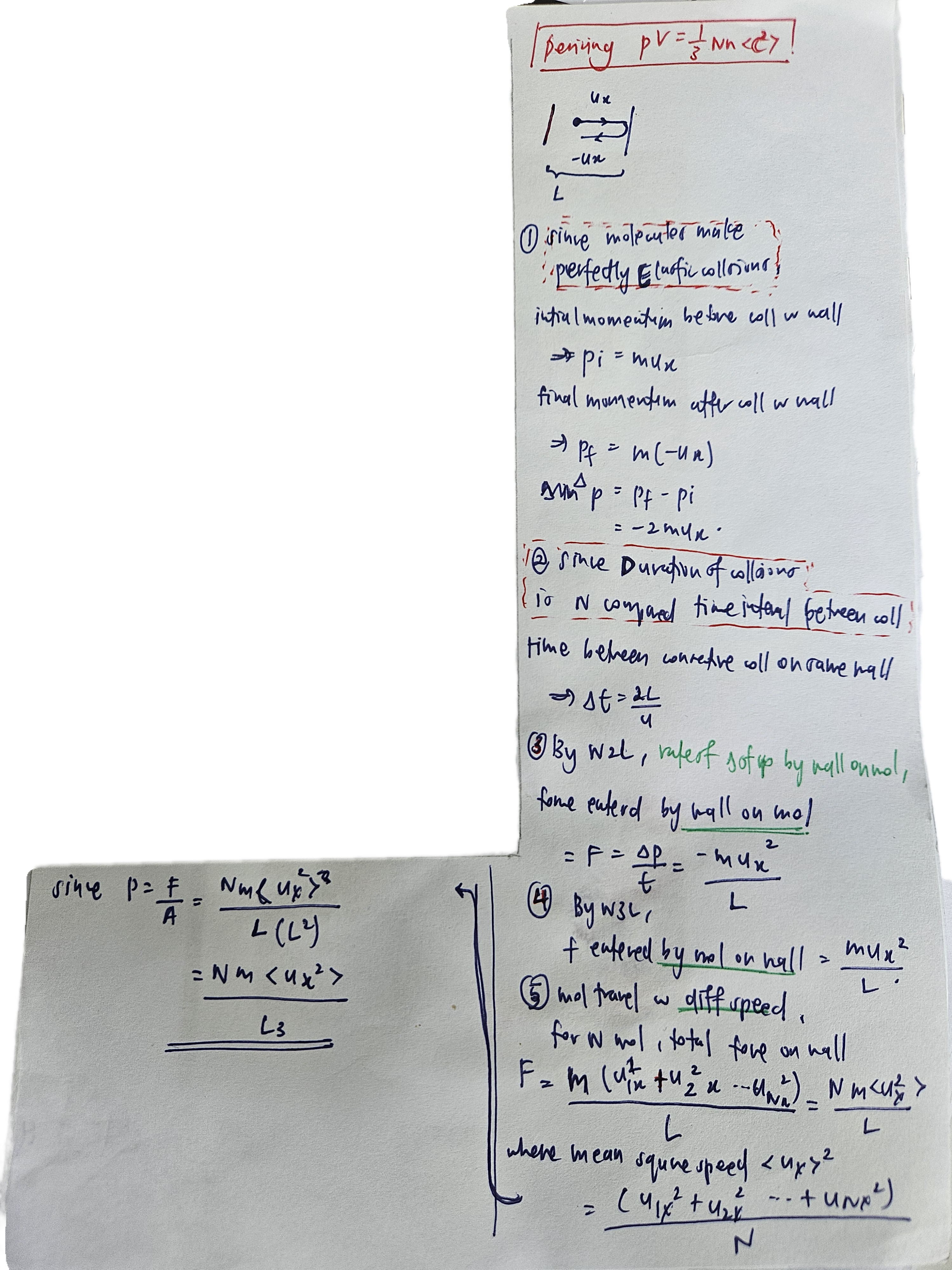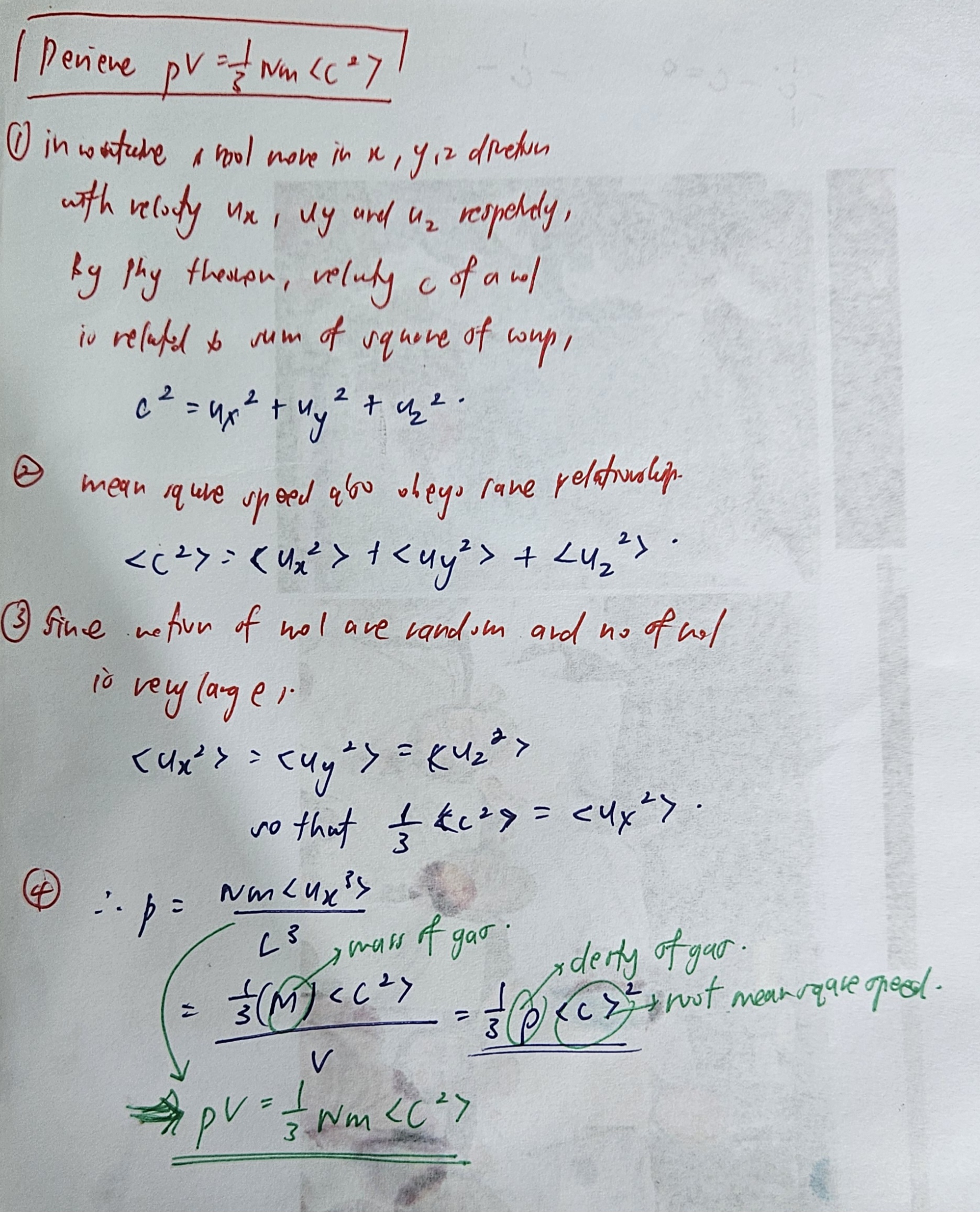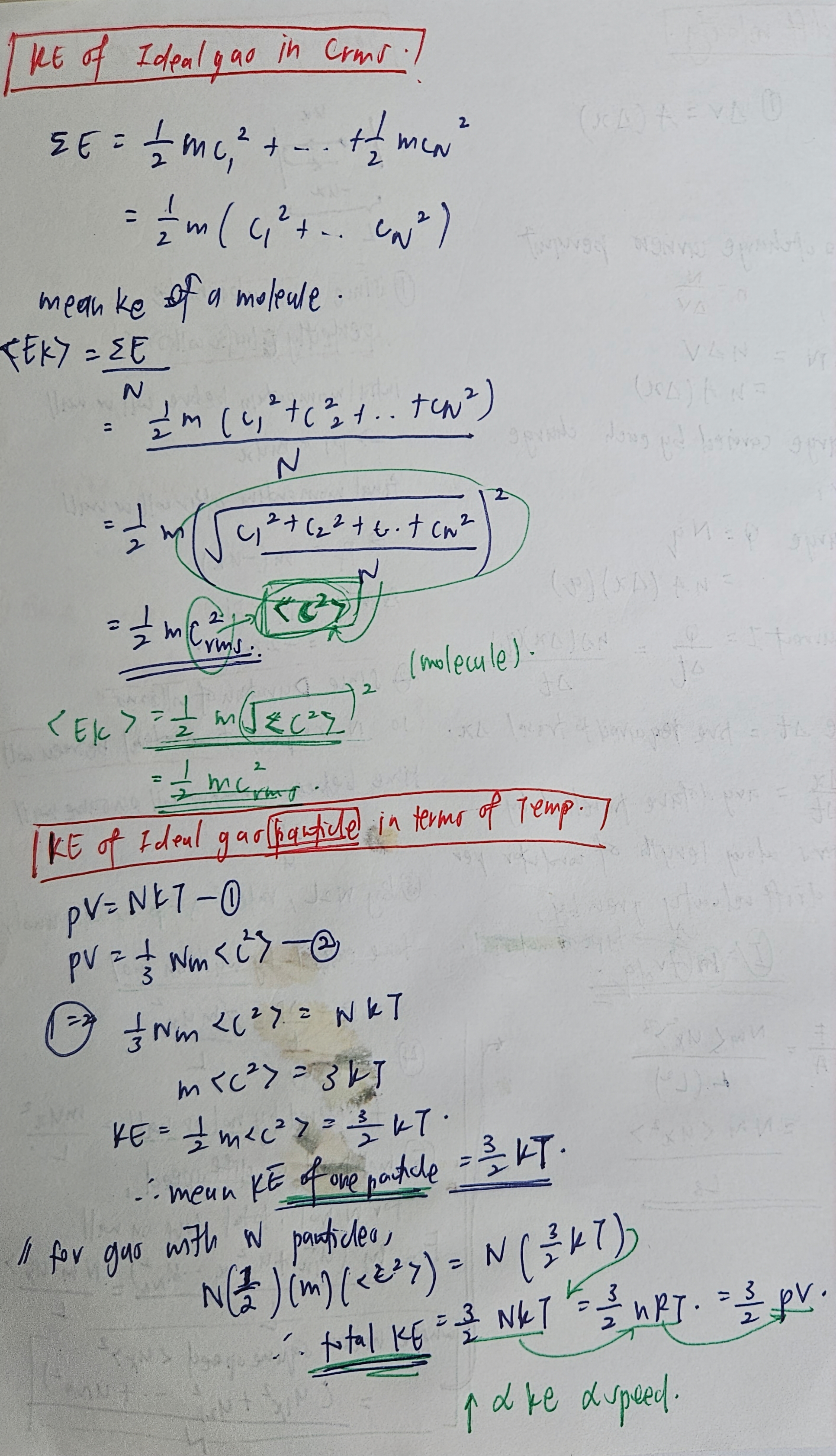Temperature and Ideal Gases
1/14
Earn XP
Description and Tags
Name | Mastery | Learn | Test | Matching | Spaced |
|---|
No study sessions yet.
15 Terms
Temperature
Degree of hotness or coldness of an object
higher temp?
greater avg MOLECULAR ke of mol
Diff temp places in thermal contact
energy flow from higher to lower temo as of ke from faster moving mol in high temp to slower mol in low temp (energy flow is called heat(
Thermal Equilibrium
there is no net heat flow between 2 obj in thermal contact they are said to be in thermal EQ, they are at the same temp
(rate of heat transfer the same between both bodies, still have heat transfer at TEQ)
Zeroth Law of Thermodynamics
if 2 obj a and b are separatelyin TEQ with obj c, a and b are also TEQ with each other
2 disadvantages of empirical scales?
linearity assumption between fixed points means only completely accurate temp obtained from the empirical scales are the fixed point temp so this means it can be inaccurate temp readings where thermometric properly on temp might differ from the ASSUMES RELATIONSHIP
diffraction thermometric prop vary duff ti temp changes so 2 thermometers using diff them pprop can give diff readings for same temp other than the fixed points —> disagreement between diff thermometer
Solving disadvantages of empirical scale
thermodynamic temp scale independent of therm property of any substance
absolute 0 - lower fixed point, 0K, lowest temo all matter can have where here atoms have min ke and ie
triple pount of water - upper fixed point, 273.16, ice water and water vapour all exist in eq, this temp as very precise and reproducible
Kelvin
defined as 1/273.16 of the temp of the triple point of water
(it cannot go below 0k - lowest already)
Ideal Gas
a theoretical gas that obeys the equation of state pV=nRT at all pressures p volumes v and thermodynamic temperatures 4 for a fixed mass of gas where R is the Molar gas constant and n is the amount of gas in moles
1 mole
Is the amount of substance that contains as many particles as there are atoms in 0.012kg of carbon-12
2 containers connected by a narrow tube
The pressure is the same
Assumptions of kinetic theory of gases
Large no of mol at constant random motion
Duration of collision between mol and between mol and walls of container negligible compared to time interval between collisions
Attractive forces negligible so do not exert forces on each other except when they collide
Volume of atoms or mol negligiblecompared to the volume occupied by the gas
E make perfectly Elastic collisions among themselves and with wall of container without losing any ke
Derive pressure exerted by Ideal gas

Derive pV=1/3Nm<c²>

Derive KE
